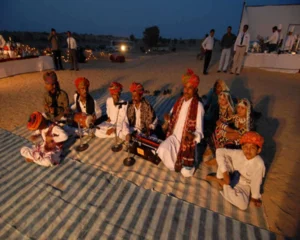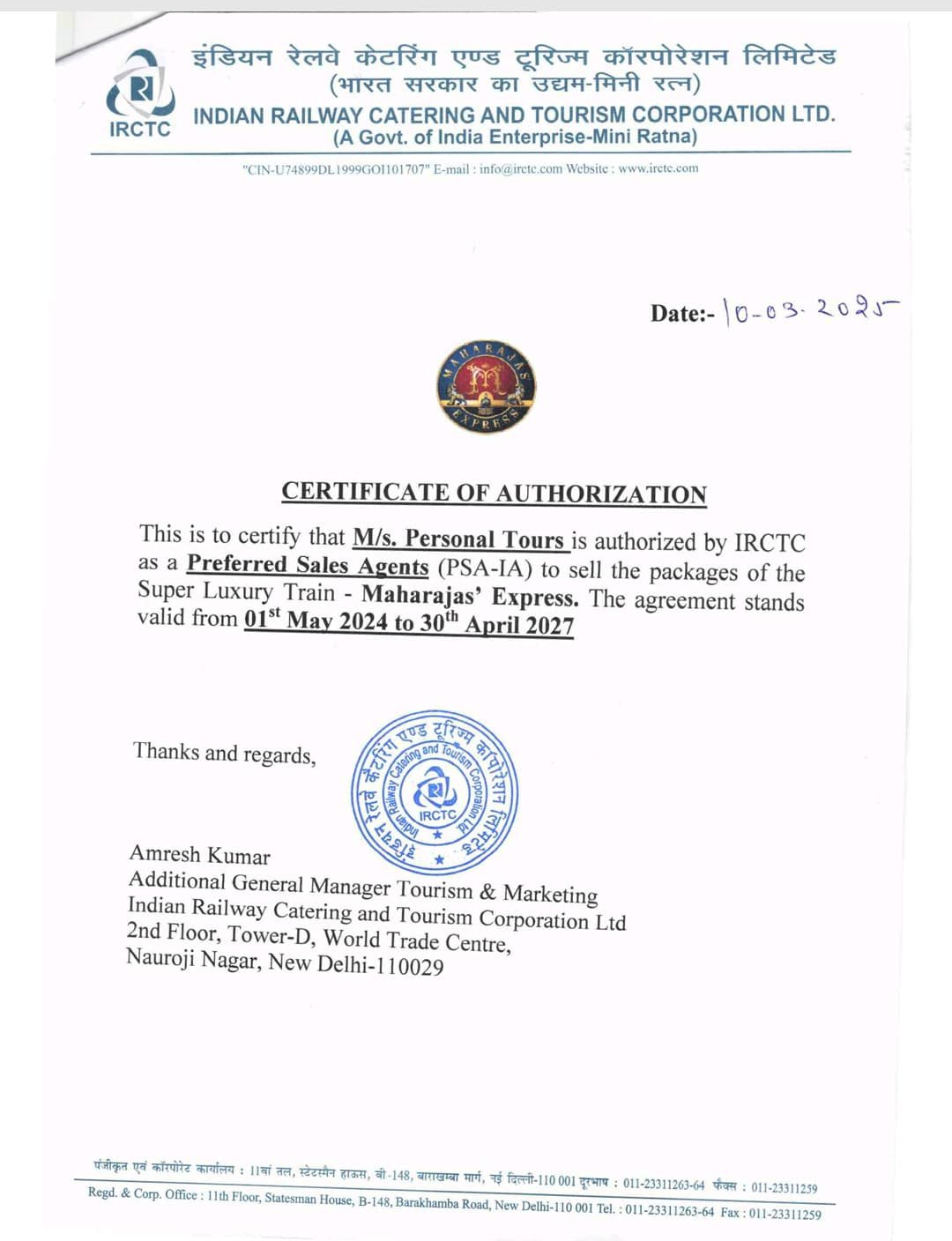
Junagarh Fort is one of the main tourist spots in Bikaner. It is known for its strong structure and detailed design. The fort was built in the late 1500s by Raja Rai Singh. It is different from many other forts in Rajasthan because it is not built on a hill.
Inside the fort, there are many palaces and rooms with painted walls, stone carvings, and wooden ceilings. Some well-known parts are Anup Mahal, Chandra Mahal, Karan Mahal, and Phool Mahal. There are also temples and a museum that shows weapons, clothes, and art from the old times.
Junagarh Fort was first called ‘Chintamani Durg.’ Later, when the royal family moved to Lalgarh Palace, it became known as the ‘Old Fort.’ Today, it is a top place to visit in Bikaner for people who want to learn about the city’s past.
History of Bikaner and Junagarh Fort
Bikaner has a long and proud history. Its forts were not only beautiful buildings but also had important uses. They helped keep the city safe from enemies, gave shelter to the royal family, and were used to run the state.
One of the most famous forts in Bikaner is Junagarh Fort. It was built in 1589 by Raja Rai Singh, a trusted general in the army of Mughal Emperor Akbar. The fort shows a mix of different styles, including Rajput, Mughal, and even some European design.
Junagarh Fort was not built on a hill like most forts in Rajasthan. Instead, it was built on flat land, which makes its strong walls and defense even more impressive. The fort was never taken by force, which shows how well it was built and guarded.
Over time, kings added new palaces, halls, and temples inside the fort. Today, it stands as proof of Bikaner’s rich history and the smart planning of its rulers. Visitors come here to see the beauty of the fort and to learn about the city’s royal past.
How Bikaner Got Its Name
Bikaner was started by Rao Bika, the second son of Rao Jodha, the ruler of Jodhpur. Since he was not going to get the throne of Jodhpur, he decided to build his own kingdom. He named it Jungladesh.
Rao Bika began with a small stone fort. Slowly, more buildings were added. Over time, the area grew and became a full city. It was named Bikaner, which means “the place of Bika.”
Even though many kings ruled after him, the name Bikaner stayed the same. Today, it is one of the most important cities in Rajasthan with a rich past.
History of Junagarh Fort
About 100 years after Bikaner was founded, Raja Rai Singh became the sixth king. He ruled during the time of the Mughal Empire. He accepted their rule and worked as a general in the army of both Emperor Akbar and Emperor Jahangir.
Because of his service, the Mughals gave him many gifts and land. He used this wealth to build a strong new fort outside the old one made by Rao Bika. This new fort was named Chintamani Durg. Work on the fort started in 1589 and finished in 1594. It was built on flat land, not on a hill, which was unusual at that time.
In the early 1900s, it got a new name—Junagarh Fort, which means “Old Fort.” One amazing thing about this fort is that, even though it was on ground level, no enemy ever captured it.
Design and Structure of Junagarh Fort
Junagarh Fort in Bikaner is known for its special mix of Rajput, Gujarati, and Mughal design styles. It was built using red sandstone brought from Jodhpur. The walls and buildings have fine carvings in red and gold sandstone that give the fort a rich and detailed look.
The fort covers around 5.28 hectares of land. Inside, there are many palaces, temples, and other old buildings. A strong wall, about 986 meters long, was built around the fort for protection. This wall has 37 bastions, or towers, to keep enemies out.
Long ago, the fort was surrounded by a deep water-filled moat. That moat is no longer there, but the strong fort still stands as a sign of Bikaner’s royal past.
Top Places to See Inside Junagarh Fort
Junagarh Fort has many interesting places inside, like palaces, temples, gates, and museums. These spots show the rich history and beauty of Bikaner. If you’re planning to visit, here are some places you should not miss:
Gates of Junagarh Fort
Junagarh Fort, often called Bikaner ka Kila, has seven gates in total. But only two are used as the main entry points—Karan Pol and Suraj Pol. In earlier times, Karan Pol was the main gate for coming in and going out. Today, Suraj Pol is the main entrance.
Suraj Pol is a beautiful gate made from yellow sandstone. It looks especially bright and golden in the morning sunlight. Two red sandstone elephant statues stand at the gate, making it look grand and welcoming.
Palaces Inside Junagarh Fort
Every great fort has its share of royal palaces, and Junagarh Fort is no different. Over time, different kings added new palaces to show their taste, power, and style. These buildings are known for their fine carvings, painted walls, and detailed designs. Here are some of the most well-known palaces you’ll find inside the fort:
Karan Mahal
Karan Mahal was built in 1680 by Emperor Karan Singh to mark his victory over Mughal Emperor Aurangzeb. It is one of the grandest palaces in Junagarh Fort. The palace has beautiful gardens, colorful stained glass windows, and finely carved balconies. Made with red and gold sandstone, Karan Mahal looks rich and royal. Its detailed design and peaceful setting make it one of the top places to see inside the fort.
Chandra Mahal
Chandra Mahal is known as the most royal-looking palace in Junagarh Fort. The walls are decorated with small, carefully placed mirrors and stones that shine and reflect light in a beautiful way. One special feature is in the king’s bedroom. Mirrors were set up in such a way that the king could see anyone entering the room without getting out of bed. This smart design shows both the comfort and careful planning that went into building this palace.
Anup Mahal
Anup Mahal was once the main place where the royal court and other important work were done. It is one of the most beautiful palaces in Junagarh Fort. The ceilings are made of finely carved wood with mirror work, and the floors are covered with shiny Italian tiles. The palace also has detailed lattice windows and balconies that add to its charm. With its rich design and fine artwork, Anup Mahal is a clear example of royal luxury.
Badal Mahal
Badal Mahal is a part of Anup Mahal and is known for its eye-catching wall paintings. The walls are covered with colorful art that shows different scenes from history and mythology. Some paintings show the Shekhawati Dundlod chiefs greeting the king, while others show people doing amazing stunts—like standing on nails, wood, swords, and saws. There are also lovely pictures of Lord Krishna and Radha. These artworks give the palace a special cultural feel and make Badal Mahal a must-see inside Junagarh Fort.
Phool Mahal
Phool Mahal, which means Flower Palace, is the oldest part of Junagarh Fort. It was built in the Mughal style and is filled with detailed floral designs on its walls and ceilings. The artwork is fine and delicate, showing the careful work of skilled artists from that time. Phool Mahal is a great example of Mughal beauty and adds to the historic charm of the fort.
Temples Inside and Around Junagarh Fort
Junagarh Fort also has temples that show its religious and cultural importance. One of them is the Har Narayan Temple, which is dedicated to Lord Lakshmi Narayan and Goddess Lakshmi. It was used by the royal family for private worship.
Another temple close to the fort is the Ratan Behari Temple, built for Lord Krishna. This temple is made in the Indo-Mughal style and stands out with its beautiful white marble and fine carvings. These temples add a peaceful and spiritual touch to the fort’s grand setting.
Museum Inside Junagarh Fort
Junagarh Fort has a museum that gives visitors a close look at Bikaner’s royal past. It was started in 1961 by Dr. Karni Singhji. The museum has a wide range of items like old paintings, royal jewelry, and everyday things used by the kings and queens.
You can also see rare Sanskrit and Persian writings, royal clothes, farmans (orders from the king), and special outfits made for idols in temples. There are even old palanquins used to carry people. One of the main highlights is the large collection of weapons from the post-medieval period. This museum is a great place for anyone who wants to learn more about the life and times of Bikaner’s rulers.
Best Time to Visit Junagarh Fort
The best time to visit Junagarh Fort is when the weather is cool and pleasant. Since Bikaner is in the Thar Desert, summers can get very hot and tiring for visitors. That’s why the ideal time to go is between November and February. The weather is cooler, which makes it easier to walk around and enjoy the fort.
Junagarh Fort is a great place for a day trip and is included in many Bikaner travel plans because of its history and beauty. When you visit, remember to bring a water bottle, wear comfortable shoes, and use sunscreen. The fort is big and you’ll be doing a lot of walking.
How to Reach Junagarh Fort in Style
If you want to visit Junagarh Fort in a truly special way, the Maharaja Express is one of the best options. This luxury train is known for its royal look, top-class service, and comfortable travel. It takes you through some of the most famous places in Rajasthan, including Bikaner.
The journey includes well-planned tours, private guides, and visits to places like Junagarh Fort. You’ll learn about the fort’s history while enjoying a smooth and relaxed trip. Onboard, you can enjoy fine dining, beautiful suites, and all the comforts you’d expect from a high-end experience.
Traveling to Bikaner on the Maharaja Express adds a touch of royal charm to your visit and makes your time at Junagarh Fort even more memorable.






 1-416-619-7795 (Toll-free)
1-416-619-7795 (Toll-free)  +44 1753 201 201
+44 1753 201 201  61-2-86078986
61-2-86078986  + 44 ( 0 ) 7739 716978
+ 44 ( 0 ) 7739 716978 




